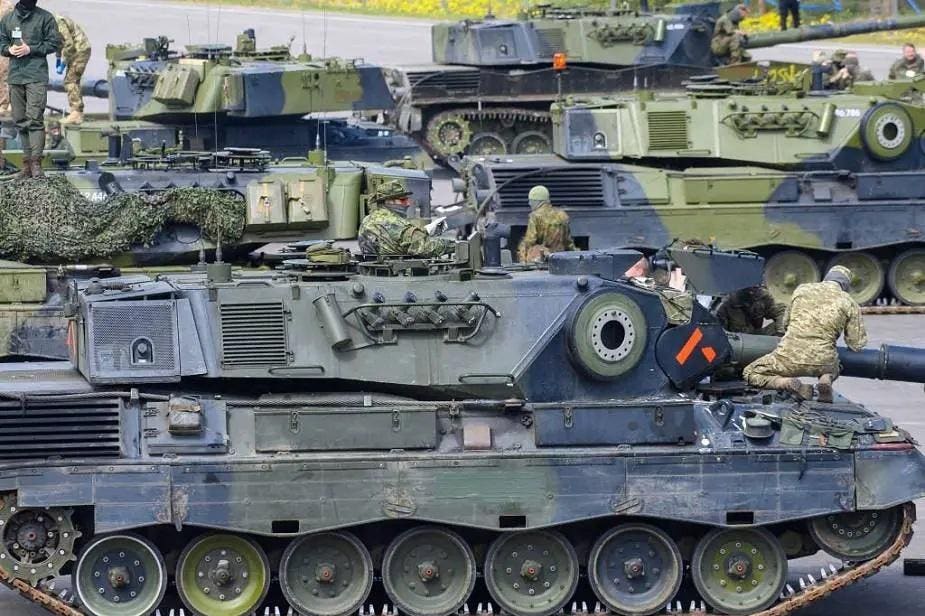The first 10 German-designed Leopard 1A5 tanks have arrived in Ukraine, five months after a German-Danish-Dutch consortium pledged the first of at least 135 of the 40-ton combat vehicles to the Ukrainian war effort.
Now that the 1980s-vintage Leopard 1A5s have begun arriving in Ukraine, the Ukrainian army, air-assault force or marine corps—whichever branch actually gets the four-person tanks—must decide what to do them.
The marines’ experience with a different vehicle—the ex-French AMX-10RC reconnaissance vehicle—could shape the Ukrainians’ choices.
That’s because the wheeled AMX-10RC and tracked Leopard 1A5, despite their obvious differences, have two things in common: they’re both reasonably well-armed with accurate 105-millimeter main guns but both also have armor that’s just a few tens of millimeters thick. Both are vulnerable to any enemy fire more powerful than a heavy machine gun.
As the Ukrainian 37th Marine Brigade learned in the early days of Ukraine’s long-anticipated southern counteroffensive, the AMX-10RC “is not a tank,” one marine told Radio Free Europe.
Russian mines and artillery shells disabled several of the 37th’s Brigade’s AMXs after inexperienced Ukrainian commanders shoved the vehicles to the front of their assault on Russian fortifications in Velyka Novosilka in southern Donetsk Oblast. At least one AMX even got disabled by near-misses from mortars that punctured the recon vehicle’s tires.
The Leopard 1A5 with its steel tracks is less vulnerable to that kind of mobility-kill, but it’s just as likely to suffer damage to its hull and turret—and harm to its crew—as an AMX-10RC is.
Which is why the Ukrainians should do with their Leopard 1A5s what they, at great cost, have learned to do with their AMX-10RCs. Deploy them far enough from the front edge of the battle that they can avoid the heaviest fire while still plucking at enemy forces with their 105-millimeter cannons. That is, a couple of miles.
The Danish army actually learned this lesson as long ago as 1994, when it deployed Leopard 1A5s to Bosnia to stiffen a U.N. peacekeeping force in Tuzla, in northern Bosnia. Serbian forces had been harassing the peacekeepers with fire from T-55 tanks.
The Leopard 1A5s crept up on the T-55s at night, when the superior optics in the Danish tanks gave them an advantage over the Serbian tanks.
In two hours, the Danes fired 72 105-millimeter rounds and knocked out all three T-55s. One Danish tank round struck what appeared to be a Serbian ammunition dump and triggered a major secondary blast. The Serbs eventually copped to losing nine soldiers. The Danes estimated they may have killed up to 150 Serbs.
But Danish commanders appreciated how narrow their advantage was. They ordered the Leopards to withdraw before the sun rose. All that is to say, the Danes knew when to quit.
A heavier tank might’ve been able to stay and fight. But even as long ago as 1994, the Leopard 1A5 no longer was a tank. It was a mobile gun. Heavy firepower without heavy protection.
Now that they’re keeping their AMX-10RCs farther from the line of contact, the Ukrainian marines are having more luck with their heavily-armed, but lightweight, recon vehicles. “The gun here is of the 105-millimeter caliber, quite good, fires accurately,” one marine said.
Whichever Ukrainian brigade gets those first Leopard 1A5s should skip the painful lesson and just assume the German-designed tanks … also aren’t really tanks.
Read the full article here





